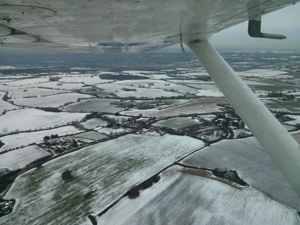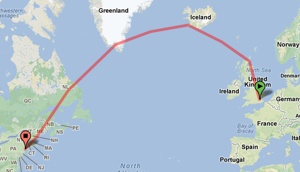As I write this my last lesson is done and my pilot's license test is mere days away. I've put over a year of flying once or twice a week, 2000 miles of commuting and around £8000 into learning to fly - why?
The first thing people think of when I say I'm learning to be a pilot is smartly-dressed men and women sitting in the cockpit of a 747 calmly doing announcements. While becoming a commercial pilot is the ambition of most students, it's not for everyone - me included.
Perhaps in another time or another place I might have gone for it - there's a certain attraction to jetting round the world, in charge of some of our most complex vehicles and seeing any number of far-flung destinations. Of course, the reality for commercial pilots is a lot nastier than that - the same route every day, getting only just enough sleep between flights, and career progression that's so slow it's almost glacial.
There's other commercial activities too - cargo, survey, private transport, etc. Some are more interesting than others.
You might think commercial pilots are well paid, and they are - once they're 45 and captaining long-haul routes. What's often forgotten is the 20 or 30 years of slowly climbing the ladder, doing short-haul routes at odd hours of the morning, working on holiday days, and knowing that if you change airline, you'll start right back at the bottom, no matter how much experience you have.
Needless to say, that's not really the life I'm aiming for. The software industry might have its own issues (and this isn't the place to discuss them) but we generally have it pretty good. Companies are falling over themselves to hire good developers, and there's an abundance of interesting things to work on if you're willing to put a little effort in.
So then, what drove me to learn to fly? After all, if it's not a career path, it's just a very expensive hobby, right?
Well, yes and no. There's a reason I left academia when I had the chance - the industry was where the true research and exploration was happening. I wanted to learn, to challenge myself, to help other people solve interesting problems, and that's just not what academia seems to do now. Learning is what I love.
Flying represents something that's new, exciting and - most importantly - has a large upper bound of ability. Much like programming, I'll never run out of things to do, places to go, or problems to solve, and I can have great fun doing it.
Of course, I do have long-term plans - it's always nice to have something to aim for. In particular, my eventual goal is to fly from London to New York.
Yes, the direct route is curved on the map, because the Earth isn't flat. Map projections are fun.
The direct route isn't particularly exciting in a commercial jet - around seven hours, with pretty much nothing but sea out of the window most of the way.
3000nm is around 3500 miles or 5500 km. Pilots always use nautical miles, so be warned - all my distances will be in them.
It's around 3000 nautical miles to fly this route, which is quite a long way. Too long, in fact - piston-engined planes, the kind I fly, have quite a limited range before they need to stop and refuel. Take, for example, a nice twin-engine piston plane, like the DA42 Twin Star pictured below - something I can only dream of having access to right now.
900 nm is for decent twin-engine planes, which I can't even fly yet. The Cessna 152 I fly has a range of 470 nm.
It has a range of around 900 nautical miles. That's a hard and fast limit - with full tanks it'll go that far before it's completely empty and needs to refuel. Since we haven't yet built Avengers-style floating aircraft carriers to refuel at (much to my chagrin) that means changing the route to include stops at airports.
Fortunately, there's a whole lot of land bordering the Atlantic Ocean, and so rather than fly from London to New York directly you have to go via Scotland, Iceland, Greenland and Canada, rather like this:
This isn't an easy route to fly - not only is it several days long, it's through some of the coldest and iciest conditions possible. Aircraft really aren't fond of ice - it tends to make the wings stop working - and so you need an aircraft with anti-icing or a lot of clear, dry air to fly through.
Still, I've always been fond of the polar regions, and flying through them is something I've wanted to do since I started learning. It's tough and potentially dangerous, but the scenery is unprecedented (and unseen by most people), and it results in a holiday like no other.
Yes, you can take the wings off a plane to ship it. The hard part is putting them back on.
The route isn't flown that often by light aircraft - most of the people who do it are ferrying planes from one continent to another (often cheaper than disassembling them and packing them into a shipping container). The airports along the way are somewhat used to it, and if the weather means you have to spend an extra day in Iceland then it's really not the end of the world.
I still have a lot of learning to do and experience to get before I can even think about attempting that kind of crossing, but it's something good to aim towards - after all, it's not about getting somewhere, it's about the journey, and this is perhaps the ultimate example.




